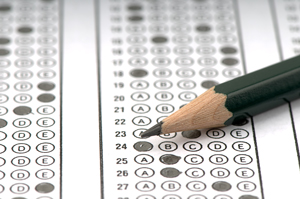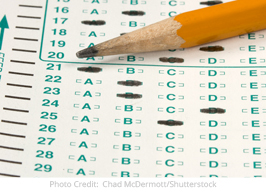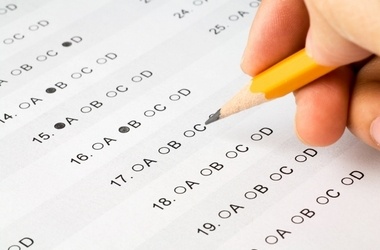SAT Subject Tests – Five Big Mistakes

DON'T MAKE THESE MISTAKES
Across the nation, high school students are in the final stretch (pun intended). In just a few weeks, finals and standardized tests will be behind us. But before school wraps up, students must clear several test-based hurdles; for many, these will include SAT Subject Tests (sometimes referred to as “SAT 2s”.) These exams allow students to demonstrate college-level excellence in a variety of academic subjects: literature, US & world history, the sciences, mathematics, and foreign languages. While many students are well-prepared for the Subject Tests, some commit to taking these exams without knowing what they’re getting themselves into, especially considering that for a high proportion of students, the Subject Tests are the first experience they’ll have with standardized college admissions exams. Here are some very common mistakes students make, and how best to avoid them.
- Assuming an “honors” or “advanced” course curriculum is sufficient. Most high schools offer multiple levels of courses to accommodate students at different levels of progress and ability. For example, a school might offer a “regular” or “standard-level” physics course along with an “honors-level” physics course. Students taking the latter might assume that because their curriculum is accelerated, they will be prepared for a high-level exam like the SAT Physics Subject Test. This, however, is not always the case. Even advanced classes often gloss over topics that are emphasized by the Subject Test. In addition, they frequently fail to present the breadth and depth of material necessary for success on these exams. Students should never assume that their classes will prepare them sufficiently for the Subject Test. Instead, they should speak with their teachers, who are likely to know which topics students will need to pursue themselves to prepare. If the teacher isn’t familiar with the Subject Test in his/her subject, students should take a practice exam as soon as possible to determine whether they have at least been exposed to the vast majority of topics that are tested on the given Subject Test.
- Lacking familiarity with the test structure. Many SAT Subject Tests feature question types and exam structures that are markedly different from those of in-school exams. For example, the Biology test includes what I like to call a “choose your own adventure” component: after the first 60 multiple choice questions, students must choose to complete the remaining 20 questions in one of two more specialized areas: Ecological (E) or Molecular (M). This section of 20 multiple choice questions is experiment-based, and will challenge students to answer questions in the context of data analysis. Students who sit for the Biology Subject Test unaware of this structure will likely be in for a rude surprise. Failing to go into the test with a set plan is asking for confusion and stress, and thus for a lower score.
- Lacking familiarity with scoring. While the SAT & ACT do not penalize students for incorrect answers, the SAT Subject Tests do: for each question students answer incorrectly, they lose one-quarter of a point from their raw scores. This means that guessing strategy is key. Students who are unaware of this fact can be sacrificing many points without knowing they’re doing so. The bottom line: all students should know that if they can eliminate two of the five multiple choice options, it’s in their best interest to make an educated guess. Otherwise, they should probably leave the question blank.
- Chilling out after the AP. For students taking AP exams, it makes complete sense to take the SAT Subject Test in the same subject. (In fact, I often refer to Subject Tests as “mini-AP tests”.) Typically, AP students take their AP exams in May and the corresponding Subject Tests in June. Many, however, start to slack off after the AP test. While relaxing immediately after an AP exam is certainly healthy, students in this situation shouldn’t let their minds go dormant. The material on the Subject Tests is high-level, and the exams move quickly. It is thus important that students continue to keep the material fresh in their heads and maintain their test-taking chops in the interim so that they don’t face plant on the SAT Subject Test only a few weeks later.
- Failing to respect the time constraints. Timing is very tight on the SAT Subject Tests. Students must be acutely aware of the time constraints, lest they find themselves only two-thirds of the way through the exam with five minutes left on the clock. To make sure they understand how quickly the Subject Tests move, students should practice with at least one or two full-length exams before they take the real thing. This way, they will be prepared to operate under the stress and pressure of the official exam.
HELPFUL RESOURCES
For students taking SAT Subject Tests this spring, here are some helpful prep resources.
- College Board Subject Test Page. This page includes links to information and practice question sets for each Subject Test. It’s a great place to start for students who know little about Subject Tests, or who would like initial practice to see whether taking the Subject Test is right for them.
- SAT Subject Test Student Guide. This PDF contains general information about the structure and content of each Subject Test.
- You can also purchase a variety of SAT Subject Test prep books, including our favorite, the College Board’s Official Guide.



